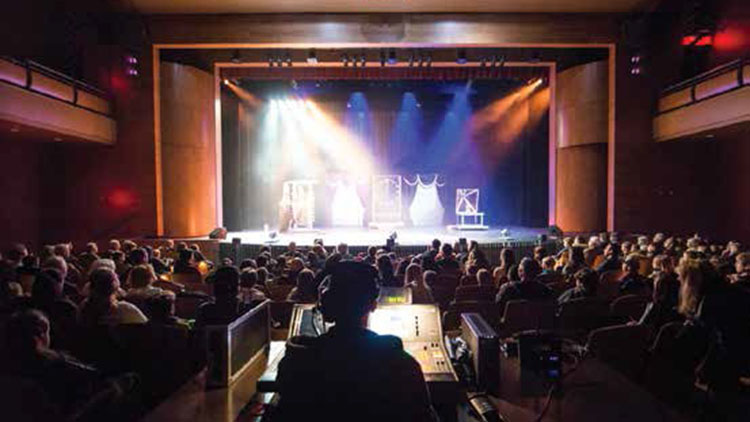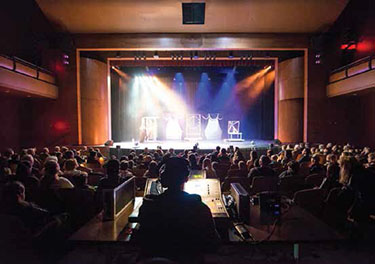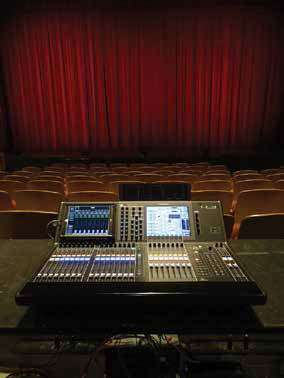Ontario Arts Center Gets Flexible Upgrade from Yamaha


The Milton Centre for the Arts’ Mattamy Theatre features a proscenium-style concert hall that seats 497 and is designed to accommodate both large-scale and more intimate performances.
The Milton Centre for the Arts (MCA), located in Milton, ON, Canada, is the community’s cornerstone for creativity. Completed in 2011, it offers exciting performances, visual media, and literary arts experiences. The beauty and professionalism of the Mattamy Theatre is what immediately strikes patrons as they enter MCA to watch a performance for the first time. The proscenium-style concert hall seats 497 and was designed with flexible lighting options to accommodate both large-scale and more intimate performances. The smaller, multi-purpose MinMaxx Hall is a flexible space with telescopic seating for 198 that accommodates cabarets, theater presentations, and more.
Already owning a selection of Yamaha digital consoles, the MCA most recently added a Yamaha CL3 Digital Audio Console, one Rio1608 input/output box, and an Ri8-D input box, provided by Westbury National in Toronto. “The audio backbone of the Milton Centre for the Arts is built on the BSS London Architect DSP and with the new Dante integration, the direct digital link into the DSP from all of our consoles has done wonders for us by increasing our capacity, simplified the center’s operation, and has extended the life of all the equipment by a considerable margin,” said Bill Zeilstra, coordinator for technical operations at MCA.

Toronto-based Westbury National equipped the MCA with a Yamaha CL3 Digital Audio Console, which enabled the center to transition to a Dante network.
“The most important part of the upgrade for us was the transition to Dante,” said Zeilstra. “Since we have five Yamaha consoles in our inventory, switching to Dante was quite easy, and because we don’t have to retire our old equipment, we’ve effectively doubled our capacity. The move to a Dante network actually gives a pretty good insight into the style of our operations, more so than any other example I can think of. And, never again will I underestimate the benefit of the mini-YGDAI slot.”
Zeilstra said it was a logical progression for MCA to look at the CL3. “All of our operators and virtually every touring operator who comes through this venue is already very familiar with the Yamaha architecture. Specifically, what the CL3 does is take everything that we’ve all come to appreciate about Yamaha functionality and enhance it, expand on it, and add other critical elements where we need them for an increased amount of control on the processing, that was already a feature of Yamaha consoles.”
Zeilstra added that the Yamaha CL3 was suited perfectly to their needs for a primary front-of-house console. “When looking into other audio systems, I found that digital audio networks and consoles still mimic (or try hard to mimic) the analog approach to audio, especially when it comes to live music. A very linear, daisy chain-type of approach that is great, reliable, and well tested when doing live music. While the CL3 can certainly hold its own in that regard, it was the non-linear, non-standard capabilities that impressed us the most and match nicely with our current operations.”
A daily selection of the top stories for AV integrators, resellers and consultants. Sign up below.
Live music is only a portion of MCA’s calendar. “In typical roadhouse fashion, what happens next in the facility can change substantially from day to day and production to production,” he said. “We also have a very diverse range of clientele who have significantly different needs and levels of support required from MCA. All this means is that there is no hard-and-fast way we do things when it comes to our technical operations. In some cases, we literally pick up our entire operation, move it to a different venue (within the facility), turn it 90 degrees from our standard configuration, and make it go. As such, we really needed something very flexible that can operate in more of a ‘star’ configuration and keeping our overall capacity up and available. Dante allows us to do this with ease. I can now use any Yamaha console for any application in any part of this facility, with minimal physical patching to get each one up and running.” The venue was built around an Aviom 6416 input/output infrastructure that is still used in conjunction with the Dante equipment.
The rack spaces were critical upgrades, Zeilstra noted, and a request from all of MCA’s operators. “The Premium Effect rack with the multi-band compressor are being used on a daily basis. And, as one of our operators mentioned to me, ‘the Dugan, the Dugan, the Dugan” referring to the built-in auto mixer capability.”
